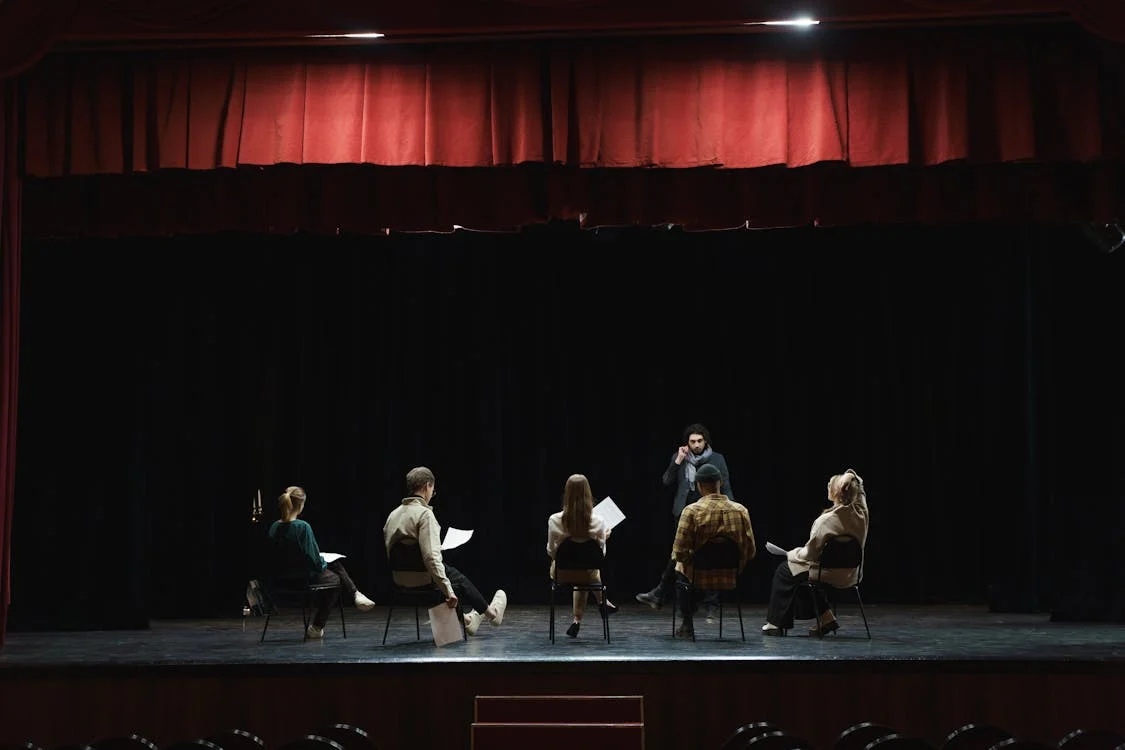What Does Blocking Mean in Acting?
In the world of theater and film, “blocking” is a fundamental aspect of the actor’s performance. Blocking refers to the precise staging of an actor’s movements, positions, and actions during a scene or performance. It is a crucial part of the rehearsal process that helps the actors know where to stand, how to move, and how to interact with other characters or elements of the scene, ensuring that the performance flows smoothly and makes sense to the audience.
The Origins of Blocking
The term “blocking” originates from the world of theater, where early productions involved actors being “blocked” on stage to ensure that each movement and position was carefully choreographed for the benefit of the audience. As performances became more complex, the term evolved, but the core idea remained the same: controlling the movement of actors on stage or on screen to enhance the storytelling.
The Importance of Blocking
Blocking plays a key role in ensuring that the production is visually cohesive and effectively communicates the story. Here are a few reasons why blocking is so important:
- Visual Composition: Just like a painter arranges elements within a frame, blocking creates a visual composition for the scene. This ensures that the actors’ positions, facial expressions, and movements are all aligned in a way that supports the themes of the production and is aesthetically pleasing to the audience.
- Storytelling: Blocking is a tool for telling the story. It helps convey emotions, power dynamics, and relationships between characters. For example, a character standing far from another might suggest emotional distance, while characters standing close together may indicate intimacy or conflict.
- Camera Angles (in Film and TV): In film and television, blocking is essential for framing shots. The director, cinematographer, and actors collaborate to ensure that each movement is not only motivated by the script but also positioned in such a way that works for the camera. This ensures the audience sees the right details at the right time.
- Audience Engagement: Blocking also considers the audience’s line of sight. In theater, this means making sure the actor’s face and movements are visible to the audience from every angle of the theater. In film, it involves positioning actors in ways that draw attention to important emotional beats or actions.
How Blocking is Developed
Blocking is typically developed during rehearsals, with the director leading the process. It involves several steps:
- Marking the Stage: In theater, the stage is usually marked with chalk or tape to indicate where the actors should stand or move during different parts of the scene. These marks help guide the actors and ensure that everyone knows where they should be at any given moment.
- Rehearsal Adjustments: During the rehearsal process, blocking is not set in stone. Directors and actors experiment with different movements, distances, and positions to find the most effective choices. Sometimes, blocking can change based on the pacing of the scene or the physicality required from the actors.
- Choreography and Staging: In some productions, blocking can be highly choreographed, especially in dance-heavy shows or action sequences in films. This allows for more complex movements and interactions between characters, such as fight scenes, dances, or large ensemble numbers.
Blocking in Different Mediums
Blocking looks a little different depending on whether you’re working in theater, film, or television.
- In Theater: Blocking is more noticeable because it involves live movement on stage. The director’s primary responsibility is to ensure that actors are positioned correctly, not only for visual impact but also for vocal projection and blocking sightlines.
- In Film and TV: While blocking is just as important, the emphasis shifts toward camera angles, lighting, and editing. Film directors must consider how the blocking will look on screen and how it works with the camera’s movement. For example, a camera may follow an actor during a scene, and the actor must adjust their blocking to keep the movement fluid and aligned with the camera’s perspective.
Conclusion
Blocking is a critical element of an actor’s performance that helps create a visually cohesive, emotionally engaging, and well-paced production. Whether on stage or on screen, blocking ensures that movements, positions, and interactions support the story and enhance the audience’s experience. It is an art in itself, requiring collaboration between the director, actors, and crew to bring the script to life in a dynamic and visually compelling way.




